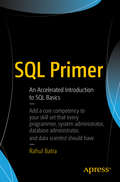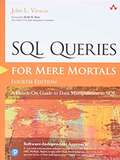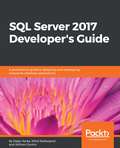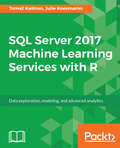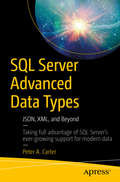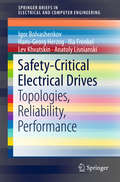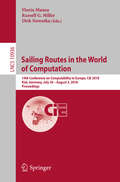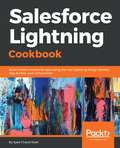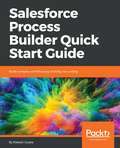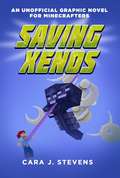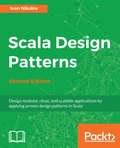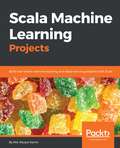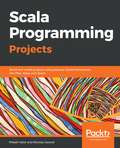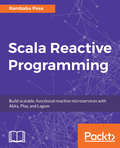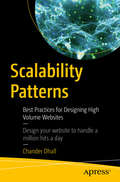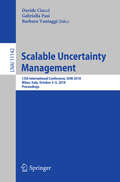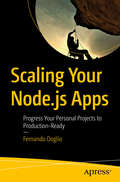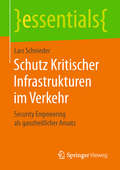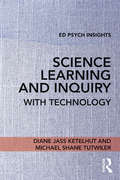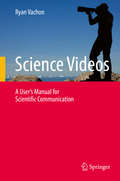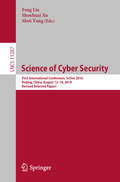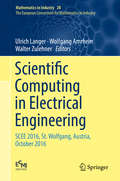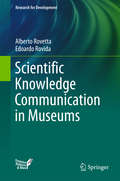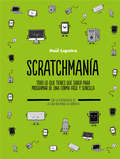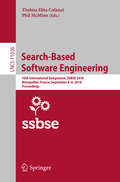- Table View
- List View
SQL Primer: An Accelerated Introduction to SQL Basics
by Rahul BatraBuild a core level of competency in SQL so you can recognize the parts of queries and write simple SQL statements. SQL knowledge is essential for anyone involved in programming, data science, and data management. This book covers features of SQL that are standardized and common across most database vendors. You will gain a base of knowledge that will prepare you to go deeper into the specifics of any database product you might encounter. Examples in the book are worked in PostgreSQL and SQLite, but the bulk of the examples are platform agnostic and will work on any database platform supporting SQL. Early in the book you learn about table design, the importance of keys as row identifiers, and essential query operations. You then move into more advanced topics such as grouping and summarizing, creating calculated fields, joining data from multiple tables when it makes business sense to do so, and more. Throughout the book, you are exposed to a set-based approach to the language and are provided a good grounding in subtle but important topics such as the effects of null value on query results. With the explosion of data science, SQL has regained its prominence as a top skill to have for technologists and decision makers worldwide. SQL Primer will guide you from the very basics of SQL through to the mainstream features you need to have a solid, working knowledge of this important, data-oriented language.What You'll LearnCreate and populate your own database tablesRead SQL queries and understand what they are doingExecute queries that get correct resultsBring together related rows from multiple tablesGroup and sort data in support of reporting applicationsGet a grip on nulls, normalization, and other key conceptsEmploy subqueries, unions, and other advanced featuresWho This Book Is ForAnyone new to SQL who is looking for step-by-step guidance toward understanding and writing SQL queries. The book is aimed at those who encounter SQL statements often in their work, and provides a sound baseline useful across all SQL database systems. Programmers, database managers, data scientists, and business analysts all can benefit from the baseline of SQL knowledge provided in this book.
SQL Queries for Mere Mortals: A Hands-on Guide to Data Manipulation in SQL
by John ViescasSQL Queries for Mere Mortals has earned worldwide praise as the clearest, simplest tutorial on writing effective queries with the latest SQL standards and database applications. Now, author John L. Viescas has updated this hands-on classic with even more advanced and valuable techniques. <p><p> Step by step, Viescas guides you through creating reliable queries for virtually any current SQL-based database. He demystifies all aspects of SQL query writing, from simple data selection and filtering to joining multiple tables and modifying sets of data. <p><p> Building on the basics, Viescas shows how to solve challenging real-world problems, including applying multiple complex conditions on one table, performing sophisticated logical evaluations, and using unlinked tables to think “outside the box.” <p><p> In two brand-new chapters, you learn how to perform complex calculations on groups for sophisticated reporting, and how to partition data into windows for more flexible aggregation. <p><p> Practice all you want with downloadable sample databases for today’s versions of Microsoft Office Access, Microsoft SQL Server, and the open source MySQL and PostgreSQL databases. Whether you’re a DBA, developer, user, or student, there’s no better way to master SQL.
SQL Server 2017 Developer’s Guide: A professional guide to designing and developing enterprise database applications
by Dejan Sarka William Durkin Miloš RadivojevićBuild smarter and efficient database application systems for your organization with SQL Server 2017Key FeaturesBuild database applications by using the development features of SQL Server 2017Work with temporal tables to get information stored in a table at any time Use adaptive querying to enhance the performance of your queriesBook DescriptionMicrosoft SQL Server 2017 is the next big step in the data platform history of Microsoft as it brings in the power of R and Python for machine learning and containerization-based deployment on Windows and Linux. Compared to its predecessor, SQL Server 2017 has evolved into Machine Learning with R services for statistical analysis and Python packages for analytical processing. This book prepares you for more advanced topics by starting with a quick introduction to SQL Server 2017’s new features and a recapitulation of the possibilities you may have already explored with previous versions of SQL Server. The next part introduces you to enhancements in the Transact-SQL language and new database engine capabilities and then switches to a completely new technology inside SQL Server: JSON support. We also take a look at the Stretch database, security enhancements, and temporal tables.Furthermore, the book focuses on implementing advanced topics, including Query Store, columnstore indexes, and In-Memory OLTP. Towards the end of the book, you’ll be introduced to R and how to use the R language with Transact-SQL for data exploration and analysis. You’ll also learn to integrate Python code in SQL Server and graph database implementations along with deployment options on Linux and SQL Server in containers for development and testing. By the end of this book, you will have the required information to design efficient, high-performance database applications without any hassle.What you will learn Explore the new development features introduced in SQL Server 2017 Identify opportunities for In-Memory OLTP technology Use columnstore indexes to get storage and performance improvements Exchange JSON data between applications and SQL Server Use the new security features to encrypt or mask the data Control the access to the data on the row levels Discover the potential of R and Python integration Model complex relationships with the graph databases in SQL Server 2017Who this book is forDatabase developers and solution architects looking to design efficient database applications using SQL Server 2017 will find this book very useful. In addition, this book will be valuable to advanced analysis practitioners and business intelligence developers. Database consultants dealing with performance tuning will get a lot of useful information from this book as well.Some basic understanding of database concepts and T-SQL is required to get the best out of this book.
SQL Server 2017 Machine Learning Services with R: Data exploration, modeling, and advanced analytics
by Julie Koesmarno Tomaz KastrunDevelop and run efficient R scripts and predictive models for SQL Server 2017 Key Features Learn how you can combine the power of R and SQL Server 2017 to build efficient, cost-effective data science solutions Leverage the capabilities of R Services to perform advanced analytics—from data exploration to predictive modeling A quick primer with practical examples to help you get up- and- running with SQL Server 2017 Machine Learning Services with R, as part of database solutions with continuous integration / continuous delivery. Book Description R Services was one of the most anticipated features in SQL Server 2016, improved significantly and rebranded as SQL Server 2017 Machine Learning Services. Prior to SQL Server 2016, many developers and data scientists were already using R to connect to SQL Server in siloed environments that left a lot to be desired, in order to do additional data analysis, superseding SSAS Data Mining or additional CLR programming functions. With R integrated within SQL Server 2017, these developers and data scientists can now benefit from its integrated, effective, efficient, and more streamlined analytics environment. This book gives you foundational knowledge and insights to help you understand SQL Server 2017 Machine Learning Services with R. First and foremost, the book provides practical examples on how to implement, use, and understand SQL Server and R integration in corporate environments, and also provides explanations and underlying motivations. It covers installing Machine Learning Services;maintaining, deploying, and managing code;and monitoring your services. Delving more deeply into predictive modeling and the RevoScaleR package, this book also provides insights into operationalizing code and exploring and visualizing data. To complete the journey, this book covers the new features in SQL Server 2017 and how they are compatible with R, amplifying their combined power. What you will learn Get an overview of SQL Server 2017 Machine Learning Services with R Manage SQL Server Machine Learning Services from installation to configuration and maintenance Handle and operationalize R code Explore RevoScaleR R algorithms and create predictive models Deploy, manage, and monitor database solutions with R Extend R with SQL Server 2017 features Explore the power of R for database administratorsWho this book is for This book is for data analysts, data scientists, and database administrators with some or no experience in R but who are eager to easily deliver practical data science solutions in their day-to-day work (or future projects) using SQL Server.
SQL Server Advanced Data Types: JSON, XML, and Beyond
by Peter A. CarterDeliver advanced functionality faster and cheaper by exploiting SQL Server's ever-growing amount of built-in support for modern data formats. Learn about the growing support within SQL Server for operations and data transformations that have previously required third-party software and all the associated licensing and development costs. Benefit through a better understanding of what can be done inside the database engine with no additional costs or development time invested in outside software.Widely used types such as JSON and XML are well-supported by the database engine. The same is true of hierarchical data and even temporal data. Knowledge of these advanced types is crucial to unleashing the full power that's available from your organization's SQL Server database investment. SQL Server Advanced Data Types explores each of the complex data types supplied within SQL Server. Common usage scenarios for each complex data type are discussed, followed by a detailed discussion on how to work with each data type. Each chapter demystifies the complex data and you learn how to use the data types most efficiently.The book offers a practical guide to working with complex data, using real-world examples to demonstrate how each data type can be leveraged. Performance considerations are also discussed, including the implementation of special indexes such as XML indexes and spatial indexes.What You'll LearnUnderstand the implementation of basic data types and why using the correct type is so importantWork with XML data through the XML data typeConstruct XML data from relational result setsStore and manipulate JSON data using the JSON data typeModel and analyze spatial data for geographic information systemsDefine hierarchies and query them efficiently through the HierarchyID typeWho This Book Is ForSQL Server developers and application developers who need to store and access complex data structures
Safety-Critical Electrical Drives: Topologies, Reliability, Performance (SpringerBriefs in Electrical and Computer Engineering)
by Ilia Frenkel Anatoly Lisnianski Igor Bolvashenkov Hans-Georg Herzog Lev KhvatskinThis book focuses on one of the most important aspects of electrical propulsion systems – the creation of highly reliable safety-critical traction electrical drives. It discusses the methods and models for analysis and optimization of reliability and fault tolerance indices, based on which, it proposes and assesses methods for improving the availability, fault tolerance and performance of traction electric drives.
Sailing Routes in the World of Computation: 14th Conference on Computability in Europe, CiE 2018, Kiel, Germany, July 30 – August 3, 2018, Proceedings (Lecture Notes in Computer Science #10936)
by Florin Manea Dirk Nowotka Russell G. MillerThis book constitutes the refereed proceedings of the 14th Conference on Computability in Europe, CiE 2018, held in Kiel, Germany, in July/ August 2017.The 26 revised full papers were carefully reviewed and selected from 55 submissions. In addition, this volume includes 15 invited papers. The conference CiE 2018 has six special sessions, namely: Approximation and optimization, Bioinformatics and bio-inspired computing, computing with imperfect information, continuous computation, history and philosophy of computing (celebrating the 80th birthday of Martin Davis), and SAT-solving.
Salesforce Lightning Cookbook: Build modern enterprise apps using the new Lightning Design System, App Builder, and Components
by Syed Chand ShahOver 25 recipes to help you design and test informative applications on the Salesforce Lightning platformKey FeaturesLearn Salesforce Lightning concepts from scratch.Build scalable enterprise apps with Salesforce design guidelines and the CSS frameworkUse Visualforce to build custom user interfaces for mobile and web appsBook DescriptionThe new Lightning Experience combines three major components—Lightning Design System, Lightning App Builder, and Lightning Components—to enable anyone to quickly and easily create beautiful, modern enterprise apps. If you wish to meet the challenges that Lightning throws at you head-on, then look no further because this practical book will be your faithful companion and ensure that you make best use of the Lightning platform.The book starts by walking you through the three major Lightning Components and helps you enable and configure a Lightning solution. You will explore the art of working with standard components and build a basic layout for the application. Then, you will add more advanced components using the Lightning Framework. Finally, you will also build and migrate reports and dashboards to make your app look more professional. Towards the end of the book, you’ll make use of Design System to work with Salesforce data and lay out the entire page with the components that you’ve built, before integrating Visualforce in your application.What you will learnEnable and configure a Lightning solutionCreate standard Lightning solutions and build a basic page layoutAdd custom components to your Lightning pagesBuild and migrate reports and dashboardsIntegrate Lightning pages with Visualforce to enhance performanceAdd stunning custom designs and styling with Lightning Design SystemWho this book is forThis book is ideal for Salesforce developers, admins, sales consultants, and sales managers who are comfortable with using Lightning features to build basic apps. Experience with JavaScript, CSS, and HTML would be an advantage but not compulsory.
Salesforce Process Builder Quick Start Guide: Build complex workflows by clicking, not coding
by Rakesh GuptaClick your way to automating business processes with Salesforce Visual WorkflowKey FeaturesCreate and maintain complex business processes using Process builderDiscover how to debug and deploy Flow and Process BuilderUse new or existing Flows to work with Salesforce Lightning ExperienceBook DescriptionSalesforce Management System is an information system used in CRM to automate business processes, such as sales and marketing. Process Builder is a visual tool created to automate business processes in Salesforce. It enables users with no coding expertise to build complex Salesforce workflows.The book starts with an introduction to Process Builder, focussing on the building blocks of creating Processes. Then you will learn about different applications of Process Builder for developing streamlined solutions. You will learn how to easily automate business processes and tackle complex business scenarios using Processes. The book explains the workings of the Process Builder so that you can create reusable processes. It also explains how you can migrate existing Workflow Rules to Process Builder.By the end of the book, you will have a clear understanding of how to use Flows and Process Builder to optimize code usage.What you will learnDevelop an application using point and click with the help of Process BuilderBypass Processes for specific usersUnderstand the concepts of reusable processesHandle complex business processes using Process Builder and keep them cleanWork with formulae in Process Builder to minimize the code requiredCreate a process with no criteria so as to minimize the amount of reworkOvercome Salesforce's known limitation in terms of referencing picklist valuesWho this book is forThis book is for people who want to use Process Builder to automate their business requirements by clicking, not coding. A basic understanding of Salesforce is required, but not extensive programming knowledge.
Saving Xenos (Unofficial Graphic Novel for Minecrafters #6)
by Cara J. Stevens Walker MelbyWhile kids from all over Xenos are competing in the all new multiplayer Olympic Games, a serious issue brings the fun to a screeching halt. The monks, who watch over the seed worlds beyond Xenos, bring news of a wave of glitches and corruption that will soon cause widespread disaster. The Defender is causing trouble from afar. But Phoenix is determined to protect the world as she knows it. With her magic necklace to guide her, Phoenix leads her friends on a dangerous adventure to repair the damage. It's not an easy journey -- they must survive deadly battles, traps, and plenty of obstacles on the way. Phoenix is prepared to risk everything for the future of Xenos . . . but is it enough to save the day? Fans of Minecraft won't want to miss this exciting conclusion to the series that began with Quest for the Golden Apple! <P><P> <i>Advisory: Bookshare has learned that this book offers only partial accessibility. We have kept it in the collection because it is useful for some of our members. To explore further access options with us, please contact us through the Book Quality link on the right sidebar. Benetech is actively working on projects to improve accessibility issues such as these.</i>
Scala Design Patterns: Design modular, clean, and scalable applications by applying proven design patterns in Scala, 2nd Edition
by Ivan NikolovLearn how to write efficient, clean, and reusable code with ScalaKey FeaturesUnleash the power of Scala and apply it in the real world to build scalable and robust applications.Learn about using and implementing Creational, Structural, Behavioral, and Functional design patterns in Scala Learn how to build scalable and extendable applications efficientlyBook DescriptionDesign patterns make developers’ lives easier by helping them write great software that is easy to maintain, runs efficiently, and is valuable to the company or people concerned. You’ll learn about the various features of Scala and will be able to apply well-known, industry-proven design patterns in your work. The book starts off by focusing on some of the most interesting and latest features of Scala while using practical real-world examples. We will be learning about IDE’s and Aspect Oriented Programming. We will be looking into different components in Scala. We will also cover the popular "Gang of Four" design patterns and show you how to incorporate functional patterns effectively. The book ends with a practical example that demonstrates how the presented material can be combined in real-life applications. You’ll learn the necessary concepts to build enterprise-grade applications. By the end of this book, you’ll have enough knowledge and understanding to quickly assess problems and come up with elegant solutions.What you will learn Immerse yourself in industry-standard design patterns—structural, creational, and behavioral—to create extraordinary applications See the power of traits and their application in Scala Implement abstract and self types and build clean design patterns Build complex entity relationships using structural design patterns Create applications faster by applying functional design patternsWho this book is forIf you want to increase your understanding of Scala and apply design patterns to real-life application development, then this book is for you.Prior knowledge of Scala language is assumed/ expected.
Scala Machine Learning Projects: Build real-world machine learning and deep learning projects with Scala
by Md. Rezaul KarimPowerful smart applications using deep learning algorithms to dominate numerical computing, deep learning, and functional programming. Key Features Explore machine learning techniques with prominent open source Scala libraries such as Spark ML, H2O, MXNet, Zeppelin, and DeepLearning4j Solve real-world machine learning problems by delving complex numerical computing with Scala functional programming in a scalable and faster way Cover all key aspects such as collection, storing, processing, analyzing, and evaluation required to build and deploy machine models on computing clusters using Scala Play framework. Book Description Machine learning has had a huge impact on academia and industry by turning data into actionable information. Scala has seen a steady rise in adoption over the past few years, especially in the fields of data science and analytics. This book is for data scientists, data engineers, and deep learning enthusiasts who have a background in complex numerical computing and want to know more hands-on machine learning application development. If you're well versed in machine learning concepts and want to expand your knowledge by delving into the practical implementation of these concepts using the power of Scala, then this book is what you need! Through 11 end-to-end projects, you will be acquainted with popular machine learning libraries such as Spark ML, H2O, DeepLearning4j, and MXNet. At the end, you will be able to use numerical computing and functional programming to carry out complex numerical tasks to develop, build, and deploy research or commercial projects in a production-ready environment. What you will learn Apply advanced regression techniques to boost the performance of predictive models Use different classification algorithms for business analytics Generate trading strategies for Bitcoin and stock trading using ensemble techniques Train Deep Neural Networks (DNN) using H2O and Spark ML Utilize NLP to build scalable machine learning models Learn how to apply reinforcement learning algorithms such as Q-learning for developing ML application Learn how to use autoencoders to develop a fraud detection application Implement LSTM and CNN models using DeepLearning4j and MXNetWho this book is for If you want to leverage the power of both Scala and Spark to make sense of Big Data, then this book is for you. If you are well versed with machine learning concepts and wants to expand your knowledge by delving into the practical implementation using the power of Scala, then this book is what you need! Strong understanding of Scala Programming language is recommended. Basic familiarity with machine Learning techniques will be more helpful.
Scala Programming Projects: Build real world projects using popular Scala frameworks like Play, Akka, and Spark
by Mikaël Valot Nicolas JorandDiscover unique features and powerful capabilities of Scala Programming as you build projects in a wide range of domainsKey FeaturesDevelop a range of Scala projects from web applications to big data analysisLeverage full power of modern web programming using Play FrameworkBuild real-time data pipelines in Scala with a Bitcoin transaction analysis appBook DescriptionScala is a type-safe JVM language that incorporates object-oriented and functional programming (OOP and FP) aspects. This book gets you started with essentials of software development by guiding you through various aspects of Scala programming, helping you bridge the gap between learning and implementing. You will learn about the unique features of Scala through diverse applications and experience simple yet powerful approaches for software development.Scala Programming Projects will help you build a number of applications, beginning with simple projects, such as a financial independence calculator, and advancing to other projects, such as a shopping application and a Bitcoin transaction analyzer. You will be able to use various Scala features, such as its OOP and FP capabilities, and learn how to write concise, reactive, and concurrent applications in a type-safe manner. You will also learn how to use top-notch libraries such as Akka and Play and integrate Scala apps with Kafka, Spark, and Zeppelin, along with deploying applications on a cloud platform.By the end of the book, you will not only know the ins and outs of Scala, but you will also be able to apply it to solve a variety of real-world problemsWhat you will learnBuild, test, and package code using Scala Build ToolDecompose code into functions, classes, and packages for maintainabilityImplement the functional programming capabilities of ScalaDevelop a simple CRUD REST API using the Play frameworkAccess a relational database using SlickDevelop a dynamic web UI using Scala.jsSource streaming data using Spark Streaming and write a Kafka producerUse Spark and Zeppelin to analyze dataWho this book is forIf you are an amateur programmer who wishes to learn how to use Scala, this book is for you. Knowledge of Java will be beneficial, but not necessary, to understand the concepts covered in this book.
Scala Reactive Programming: Build scalable, functional reactive microservices with Akka, Play, and Lagom
by Rambabu PosaBuild fault-tolerant, robust, and distributed applications in Scala Key Features - Understand and use the concepts of reactive programming to build distributed systems running on multiple nodes. - Learn how reactive architecture reduces complexity throughout the development process. - Get to grips with functional reactive programming and Reactive Microservices. Book Description Reactive programming is a scalable, fast way to build applications, and one that helps us write code that is concise, clear, and readable. It can be used for many purposes such as GUIs, robotics, music, and others, and is central to many concurrent systems. This book will be your guide to getting started with Reactive programming in Scala. You will begin with the fundamental concepts of Reactive programming and gradually move on to working with asynchronous data streams. You will then start building an application using Akka Actors and extend it using the Play framework. You will also learn about reactive stream specifications, event sourcing techniques, and different methods to integrate Akka Streams into the Play Framework. This book will also take you one step forward by showing you the advantages of the Lagom framework while working with reactive microservices. You will also learn to scale applications using multi-node clusters and test, secure, and deploy your microservices to the cloud. By the end of the book, you will have gained the knowledge to build robust and distributed systems with Scala and Akka. What you will learn Understand the fundamental principles of Reactive and Functional programming Develop applications utilizing features of the Akka framework Explore techniques to integrate Scala, Akka, and Play together Learn about Reactive Streams with real-time use cases Develop Reactive Web Applications with Play, Scala, Akka, and Akka Streams Develop and deploy Reactive microservices using the Lagom framework and ConductR Who this book is for This book is for Scala developers who would like to build fault-tolerant, scalable distributed systems. No knowledge of Reactive programming is required.
Scalability Patterns: Best Practices for Designing High Volume Websites
by Chander DhallIn this book, the CEO of Cazton, Inc. and internationally-acclaimed speaker, Chander Dhall, demonstrates current website design scalability patterns and takes a pragmatic approach to explaining their pros and cons to show you how to select the appropriate pattern for your site. He then tests the patterns by deliberately forcing them to fail and exposing potential flaws before discussing how to design the optimal pattern to match your scale requirements. The author explains the use of polyglot programming and how to match the right patterns to your business needs. He also details several No-SQL patterns and explains the fundamentals of different paradigms of No-SQL by showing complementary strategies of using them along with relational databases to achieve the best results. He also teaches how to make the scalability pattern work with a real-world microservices pattern. With the proliferation of countless electronic devices and the ever growing number of Internet users, the scalability of websites has become an increasingly important challenge. Scalability, even though highly coveted, may not be so easy to achieve. Think that you can't attain responsiveness along with scalability? Chander Dhall will demonstrate that, in fact, they go hand in hand.What You'll LearnArchitect and develop applications so that they are easy to scale. Learn different scaling and partitioning options and the combinations. Learn techniques to speed up responsiveness. Deep dive into caching, column-family databases, document databases, search engines and RDBMS. Learn scalability and responsiveness concepts that are usually ignored.Effectively balance scalability, performance, responsiveness, and availability while minimizing downtime.Who This Book Is ForExecutives (CXOs), software architects , developers, and IT Pros
Scalable Uncertainty Management: 12th International Conference, SUM 2018, Milan, Italy, October 3-5, 2018, Proceedings (Lecture Notes in Computer Science #11142)
by Davide Ciucci Barbara Vantaggi Gabriella PasiThis book constitutes the refereed proceedings of the 12th International Conference on Scalable Uncertainty Management, SUM 2018, which was held in Milan, Italy, in October 2018. The 23 full, 6 short papers and 2 tutorials presented in this volume were carefully reviewed and selected from 37 submissions. The conference is dedicated to the management of large amounts of complex, uncertain, incomplete, or inconsistent information. New approaches have been developed on imprecise probabilities, fuzzy set theory, rough set theory, ordinal uncertainty representations, or even purely qualitative models.
Scaling Your Node.js Apps: Progress Your Personal Projects to Production-Ready
by Fernando DoglioTake your Node.js application into production-ready status, capable of scaling up to whatever your needs might be. You'll discover that architecting for successful, popular sites is an essential tool of any professional Node.js developer, and learning to scale your own applications is a great place to start. Using this book you will learn when to scale, what factors should trigger scaling, and what architectural techniques are best suited for scaling. You will also explore common pitfalls that arise when scaling a Node.js application and solutions to correct them.Including analyses of success cases at the largest-scale companies, such as Netflix and Paypal, this book will get you started with scaling in no time at all. What You'll LearnDetermine what factors should trigger the need to scaleDiscover different architectural patterns that lend themselves to scalingResolve problems that arise when scaling up a Node.js applicationMonitor a platform in order to understand when to start scalingWho This Book Is ForThe main audience for this book are Node.js developers with a mid-level understanding of the technology. Novice Node users will also benefit from the coverage of generic scaling-related topics.
Schutz Kritischer Infrastrukturen im Verkehr: Security Engineering als ganzheitlicher Ansatz (essentials)
by Lars SchniederVerkehrsinfrastrukturen sind ein Rückgrat unserer Gesellschaft. Dieses essential beantwortet die Frage, was unter einer Kritischen Verkehrsinfrastruktur zu verstehen ist. IT-Systeme sind für die effektive Steuerung Kritischer Verkehrsinfrastrukturen elementar. Deshalb sind diese besonders gegen unberechtigte Zugriffe von außen zu schützen. Die Motivation zur Absicherung Kritischer Verkehrsinfrastrukturen wird aus geltenden rechtlichen Sicherheitspflichten heraus begründet. In Anlehnung an den in der Praxis seit Langem bewährten europäischen Rechtsrahmen der Produktsicherheit werden die einzelnen aufeinander bezogenen Glieder einer Qualitätssicherungskette für die Absicherung der IT-Sicherheit Kritischer Verkehrsinfrastrukturen dargestellt. Mit dem Gestaltungsparadigma der tiefgestaffelten Verteidigung (defense in depth) werden konkrete Handlungsoptionen für die organisatorische und systemtechnische Ausgestaltung des Schutzes Kritischer Verkehrsinfrastrukturen aufgezeigt.Der AutorDr.-Ing. Lars Schnieder verantwortet in einer Software-Entwicklungsfirma das Geschäftsfeld Sicherheitsbegutachtung. Er ist international als anerkannter Sachverständiger für Zugsicherungsanlagen tätig.
Science Learning and Inquiry with Technology (Ed Psych Insights)
by Diane Jass Ketelhut Michael Shane TutwilerWhen implemented effectively, technology has great potential to positively connect with learning, assessment, and motivation in the context of K–12 science education and inquiry. Written by leading experts on technology-enhanced science learning and educational research, this book situates the topic within the broader context of educational psychology research and theory and brings it to a wider audience. With chapters on the fundamentals of science learning and assessment, integration of technology into classrooms, and examples of specific technologies, this concise volume is designed for any course on science learning that includes technology use in the curriculum. It will be indispensable for student researchers and both pre- and in-service teachers alike.
Science Videos: A User's Manual For Scientific Communication
by Ryan VachonEffective science communication is no easy task. While the effective conveyance of technical knowledge presents formidable roadblocks to sharing scientific knowledge and discoveries, certain communication tools like video and film production help to bridge this gap. This user’s manual provides a complete set of easy-to-follow directions for video-making as well as tricks of the trade to leverage these skills to better inform the intended audience.
Science of Cyber Security: First International Conference, SciSec 2018, Beijing, China, August 12-14, 2018, Revised Selected Papers (Lecture Notes in Computer Science #11287)
by Feng Liu Moti Yung Shouhuai XuThis book constitutes the proceedings of the First International Conference on Science of Cyber Security, SciSec 2018, held in Beijing, China, in August 2018.The 11 full papers and 6 short papers presented in this volume were carefully reviewed and selected from 54 submissions. The papers focus on science of security; cybersecurity dynamics; attacks and defenses; network security; security metrics and measurements; and performance enhancements.
Scientific Computing in Electrical Engineering: Scee 2016, St. Wolfgang, Austria, October 2016 (Mathematics In Industry Ser. #28)
by Ulrich Langer Wolfgang Amrhein Walter ZulehnerThis collection of selected papers presented at the 11th International Conference on Scientific Computing in Electrical Engineering (SCEE), held in St. Wolfgang, Austria, in 2016, showcases the state of the art in SCEE. The aim of the SCEE 2016 conference was to bring together scientists from academia and industry, mathematicians, electrical engineers, computer scientists, and physicists, and to promote intensive discussions on industrially relevant mathematical problems, with an emphasis on the modeling and numerical simulation of electronic circuits and devices, electromagnetic fields, and coupled problems. The focus in methodology was on model order reduction and uncertainty quantification. This extensive reference work is divided into six parts: Computational Electromagnetics, Circuit and Device Modeling and Simulation, Coupled Problems and Multi‐Scale Approaches in Space and Time, Mathematical and Computational Methods Including Uncertainty Quantification, Model Order Reduction, and Industrial Applications. Each part starts with a general introduction, followed by the respective contributions. This book will appeal to mathematicians and electrical engineers. Further, it introduces algorithm and program developers to recent advances in the other fields, while industry experts will be introduced to new programming tools and mathematical methods.
Scientific Knowledge Communication in Museums (Research For Development Ser.)
by Edoardo Rovida Alberto RovettaThis book explains the general principles of scientific and technical communication in the context of modern museums. It also examines, with the aid of informative case studies, the different means by which knowledge can be transmitted, including posters, objects, explanatory guidance, documentation, and catalogues. Highlighting the ever more important role of multimedia and virtual reality components in communicating understanding of and facilitating interaction with the displayed object, it explores how network communications systems and algorithms can be applied to offer individual users the information that is most pertinent to them. The book is supported by a Dynamic Museums app connected to museum databases where series of objects can be viewed via cloud computing and the Internet and printed using 3D printing technology. This book is of interest to a diverse readership, including all those who are responsible for museums’ collections, operations, and communications as well as those delivering or participating in courses on museums and their use, communication design and related topics.
Scratchmanía
by Raúl Lapeira¡Scratch, la programación al alcance de los más pequeños, de la mano de los máximos expertos en España! Scratch es el lenguaje de programación visual más sencillo con el que los niños podrán dar sus primeros pasos sin tener un conocimiento profundo de código. El libro combina la teoría y explicación sobre lo que es el scratch, a la vez que plantea proyectos sencillos para llevar a cabo utilizando la herramienta que se ha estudiado en un comienzo.
Search-Based Software Engineering: 10th International Symposium, SSBSE 2018, Montpellier, France, September 8-9, 2018, Proceedings (Lecture Notes in Computer Science #11036)
by Thelma Elita Colanzi Phil McMinnThis book constitutes the refereed proceedings of the 10th International Symposium on Search-Based Software Engineering, SSBSE 2018, held in Montpellier, France, in September 2018. The 12 full papers and 7 short papers presented together with 3 keynotes, 2 tutorials, and 1 anniversary paper were carefully reviewed and selected from 21 submissions. SSBSE welcomes not only applications from throughout the software engineering lifecycle but also a broad range of search methods ranging from exact Operational Research techniques to nature-inspired algorithms and simulated annealing.Chapter "Deploying Search Based Software Engineering with Sapienz at Facebook" is available open access under a Creative Commons Attribution 4.0 International License via link.springer.com.
